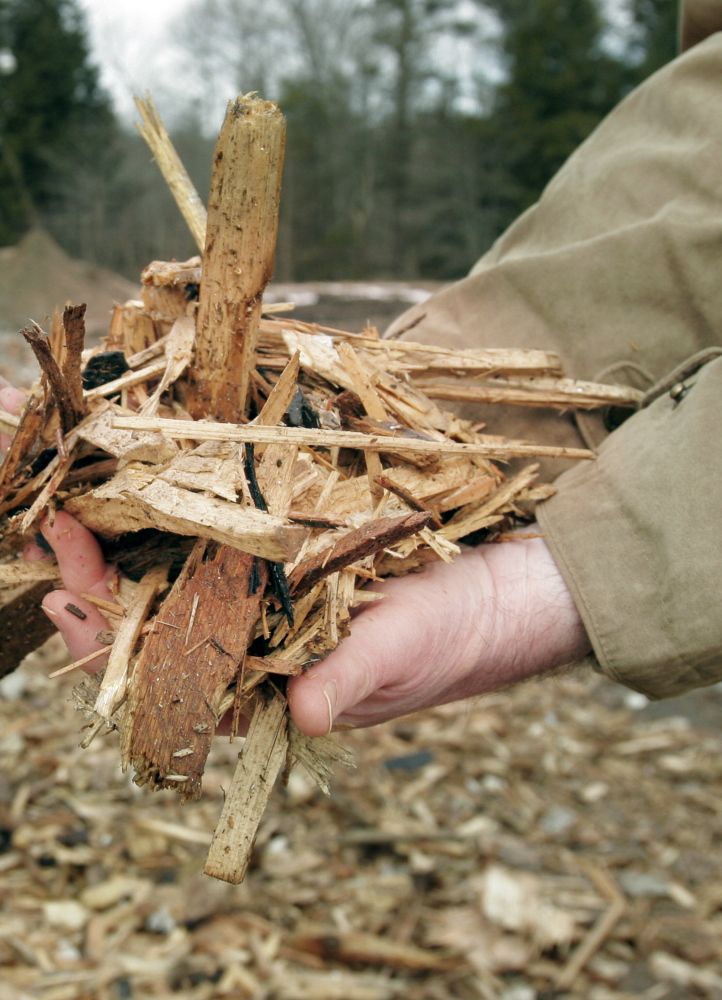One of our most important state industries just got a boost from the Environmental Protection Agency.
Biomass – or, more simply, wood – has been heating Maine homes for generations.
But few Mainers appreciate that woody material – mostly chips from harvesting residue – actually generates more than 20 percent of Maine’s total electricity and is second only to hydropower as the largest source of our renewable energy. We are putting to good use materials that often are left to decay or be discarded.
We have one of the least understood forms of energy, but standalone biomass power plants can be found across the state: From Stratton to Jonesboro, from Livermore to Fort Fairfield. These facilities often serve as the largest taxpayer in the small towns where they are located, in addition to directly employing up to five workers per megawatt and supporting dozens of jobs outside the facility.
That’s why the EPA’s mid-November action was so crucial. The agency released an analysis of carbon emissions from biogenic, or organic, sources.
The analysis, for which we have been waiting several years, validates what we’ve known all along – that emissions from sustainably sourced biomass are “likely to have minimal or no net atmospheric contributions of biogenic CO2 emissions, or even reduce such impacts, when compared with an alternate fate of disposal.”
CARBON COUNTS
Accompanying this framework was a memo to states declaring that biomass can be counted toward carbon reduction strategies under the Clean Power Plan, the EPA’s nationwide plan to reduce carbon emissions by setting attainable targets for each state.
This is a huge development for the state of Maine, as the national leader in biomass electricity production on a per capita basis.
Most of this power is actually consumed locally, but the “green” credits associated with the power are sold to states like Massachusetts and Connecticut, where opportunities for local renewable energy projects are limited.
Because of our small population and the over-abundance of renewable energy resources, this export is one of Maine’s most valuable products, with biomass contributing well in excess of $100 million to Maine’s economy.
Biomass is “baseload” power, meaning that it operates 24/7.
That comes in handy when, like last winter, the region plunged into the “polar vortex,” causing electrical prices to skyrocket because there wasn’t enough natural gas to heat homes and feed power plants.
That same scenario has been forecast for this winter, as shown by the Maine Public Utilities Commission’s recent prediction that power prices are likely to climb by 40 percent or more.
Biomass is important for another reason: That’s jobs.
Beyond simply providing renewable energy, Maine’s biomass industry supports 1,200 jobs, directly and indirectly. That’s almost the combined workforce of the now-closed mills at Bucksport, Old Town and East Millinocket.
Earlier this fall, as part of Maine’s activities for National Bioenergy Day, I visited the newly re-opened facility in Ashland, and learned that laid-off papermakers from Millinocket were now on the payroll and bringing the value of years of training that they had received as Great Northern employees.
WORKING WITH PAPER
Every Mainer is concerned about the health of our paper industry. It’s our Ford and GM.
While our leaders in Augusta are unlikely to stem the tide of shrinking markets for our paper, we can work with other New England states to ensure that Maine’s biomass energy supply is fully valued throughout the region.
Obviously our energy future must include expanded natural gas infrastructure. But as we consider these investments, let’s make sure that our own biomass resources at home are maximized and preserved.
The EPA’s recent action is a step forward, not only for biomass power, but also for other forms of energy from organic materials, like residential wood pellets, export wood pellets, wood chips for district heating systems and other cutting-edge technologies like anaerobic digestion.
We are finally gaining recognition for the many benefits of this obscure but ingenious fuel made from materials that otherwise would have very little to no value.
We, as Mainers, should be proud of our leading role in this workhorse energy technology.
— Special to the Telegram
Send questions/comments to the editors.


